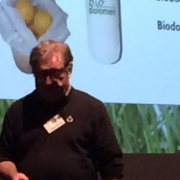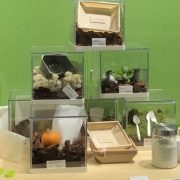Biodolomer visit Multibiosol in Spain May 29 2019
LIFE Multibiosol is a project with several interesting touch points that tie with the Biodolomer for LIFE project. Both projects aim to show case products benefiting from being made from compostable biomaterial. The projects aim to show the environmental and social economic benefits on all stages of the life cycle. The visit was aimed to exchange experiences, learn more about the successful Multibisol project and have a 10 min talk about Biodolomer for LIFE. The aim was also to make new connections and find potential collaborations between the project participants.
Biodolomer for LIFE representative Konrad Rosén made a presentation the Biodolomer® material and the four products showcasing the functionally and quality of the final products. Konrad talked about the benefits of Biodolomer®.
Areas of disussion was for the conference:
- benefits of using bio pouches and warps on produce to increase food quality, freshness and uniform color and look
- the validation of mulch film f mulch film and the certification scheme OK COMPOST SOIL
- on water treatment and plus and minus on mineral filler in biomaterials as a source for overfertilization
- EEAD-CSIC discussed future plans to make further tests into why biomaterial help produce stay fresh for longer. GAIA have on several occasions seen the same positive results with packaging of fish and bananas, but the science behind these findings is still not fully explored
- Aitiip Technology Centre discussed with Konrad on the future opportunities for bioplastic production in Spain and EU. The pros and cons and how to develop the European market in the years to come. The need for legislation and taxation of fossil based non compostable plastics in one time use products. A unified EU standard for waste management of used bioplastics
And excerpt from the final conference which Konrad found interesting on the effect on biobags on peaches:
“The main improvements found using biodegradable bags in the quality parameters were in the external appearance of the peaches. The reddish coloring found on some peaches disappeared with the use of opaque biodegradable bags, improving the peaches commercial quality and subsequently its sale price. In the same way, these bags improved the nutritional composition of the fruit and reduced pesticide residues.”
In the afternoon the Group visited Aiitip lab and production facility. It was interesting to see the lab setup and production facilities and listen to best practices when producing biomaterial.

















